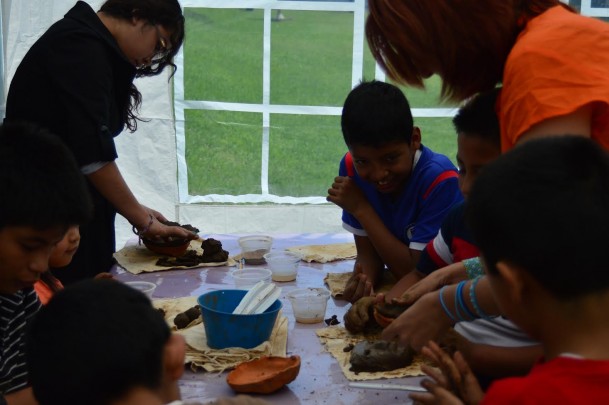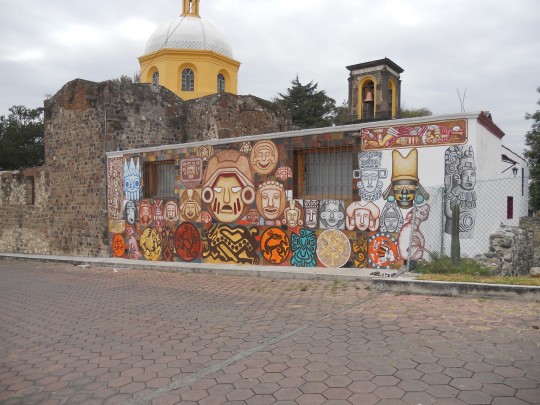Museo de Sitio de Ocotelulco
The principal Tlaxcalan fiefdom in 1519, with the remains of a temple built a century before, whose mural paintings show Tezcatlipoca on fire and other symbols of religious sacrifice, such as Xiuhcatl, or the fire serpent descending like a stream of blood.
About the museum
The museum displays objects from the Tlaxcalan culture found in excavations of areas close to the pre-Hispanic temple. The culture is characterized by its codex-style polychrome ceramics, which portray an important cult to Tezcatlipoca with representations of human sacrifice rituals.
The building was fitted out in 1991 to store the archeological collection amassed from the excavation seasons to that date. It has two exhibition galleries and a room for research. It has around 750 pieces including stone and clay sculptures, obsidian arrow tips, bone needles, spindle whorls (malacates) and an important collection of ceramics. The display also includes burials with offerings.
The building has wide stone walls and a tiled roof. The facade and back wall are decorated with details from pre-Hispanic mural paintings and polychrome ceramics that have been found at the site.
The Ocotelulco site museum has a garden with plants used in pre-Hispanic times such as various species of agave, nopal and avocado. There are also trees which came to this land with the arrival of the Spanish, such as peaches, lemons and oranges.
The building was fitted out in 1991 to store the archeological collection amassed from the excavation seasons to that date. It has two exhibition galleries and a room for research. It has around 750 pieces including stone and clay sculptures, obsidian arrow tips, bone needles, spindle whorls (malacates) and an important collection of ceramics. The display also includes burials with offerings.
The building has wide stone walls and a tiled roof. The facade and back wall are decorated with details from pre-Hispanic mural paintings and polychrome ceramics that have been found at the site.
The Ocotelulco site museum has a garden with plants used in pre-Hispanic times such as various species of agave, nopal and avocado. There are also trees which came to this land with the arrival of the Spanish, such as peaches, lemons and oranges.
November 1991
Practical information
Tuesday to Sunday from 10: 00 to 16: 00 hrs.
Free admission
Avenida San Francisco s/n (Prolongación Benito Juárez),
C.P. 90165, San Francisco Ocotelulco
Totolac, Tlaxcala, México.
C.P. 90165, San Francisco Ocotelulco
Totolac, Tlaxcala, México.
From the city of Tlaxcala, take Julián Carrillo avenue and the junction with Xicoténcatl avenue, which lead to the town of San Francisco Ocotelulco.
By highway, take Carretera Federal 117 D.
Services
Directory
Encargado del museo
José Eduardo Contreras Martínez
This email address is being protected from spambots. You need JavaScript enabled to view it.
+52 (246) 144 5832













